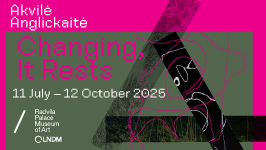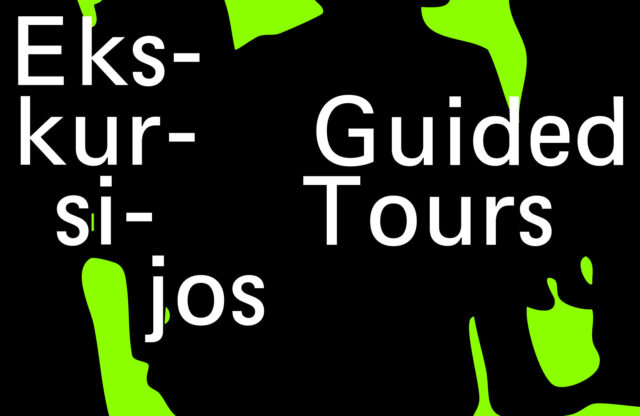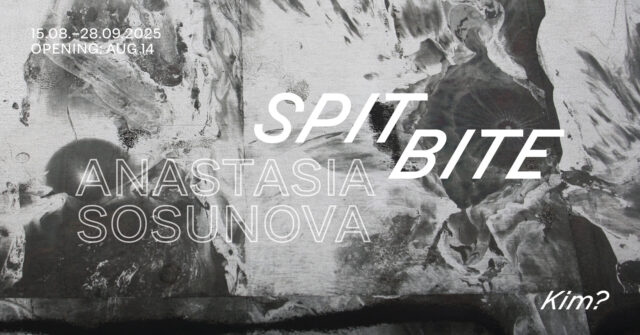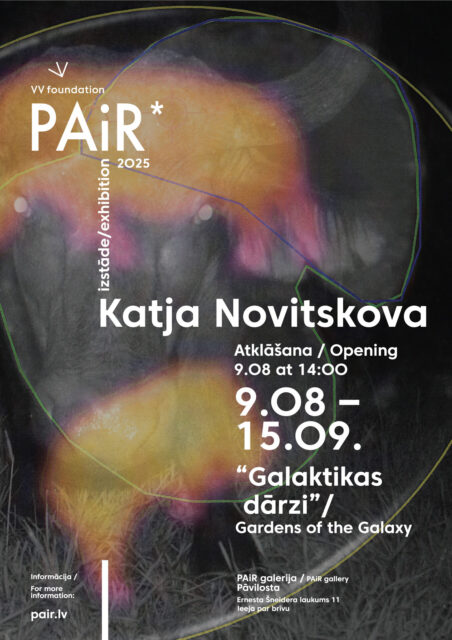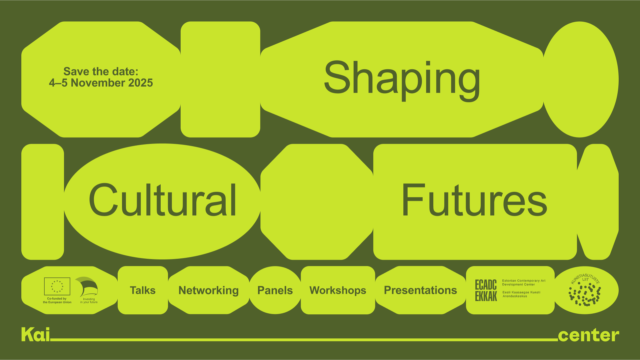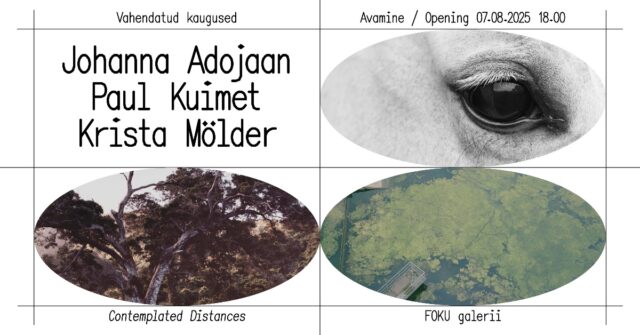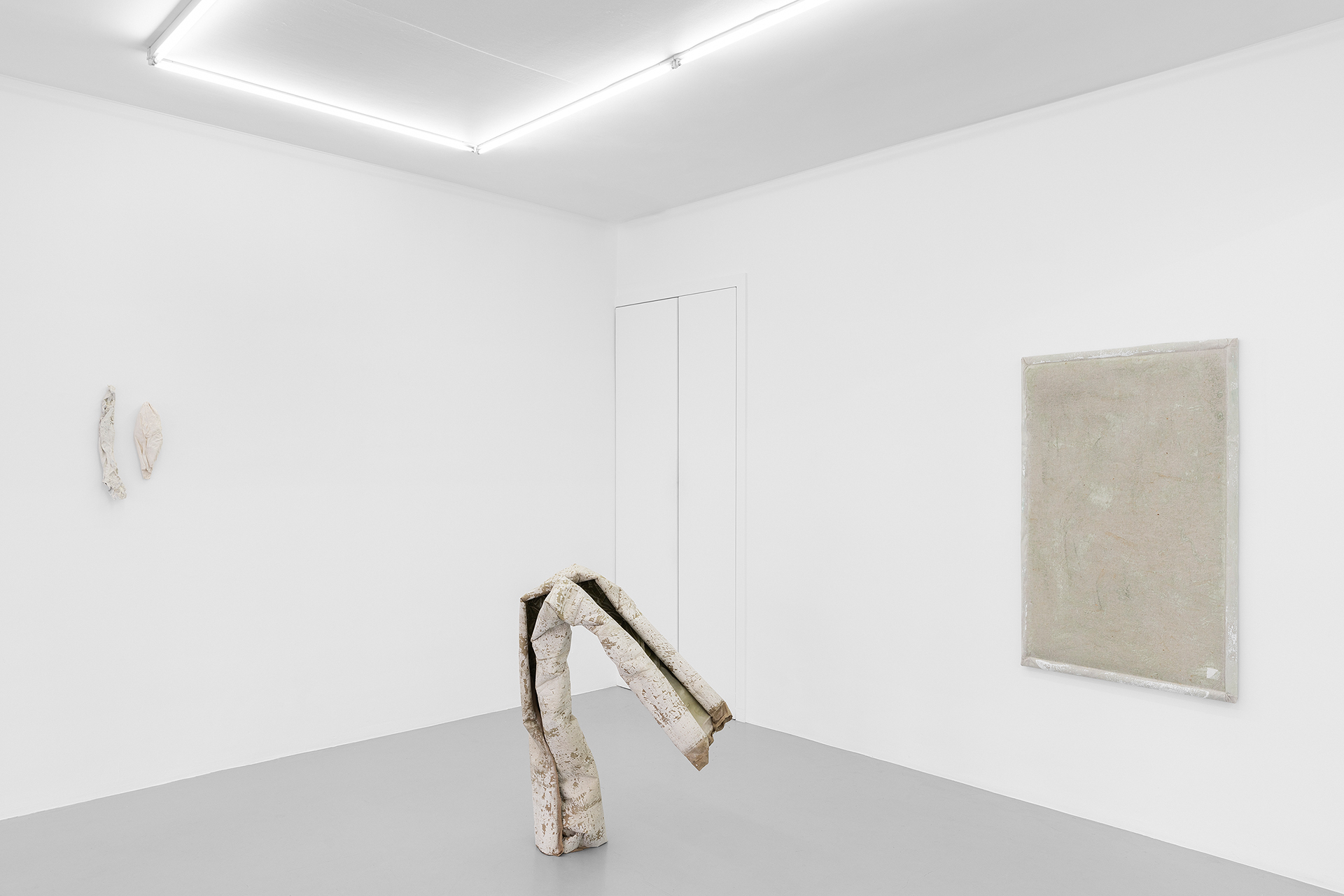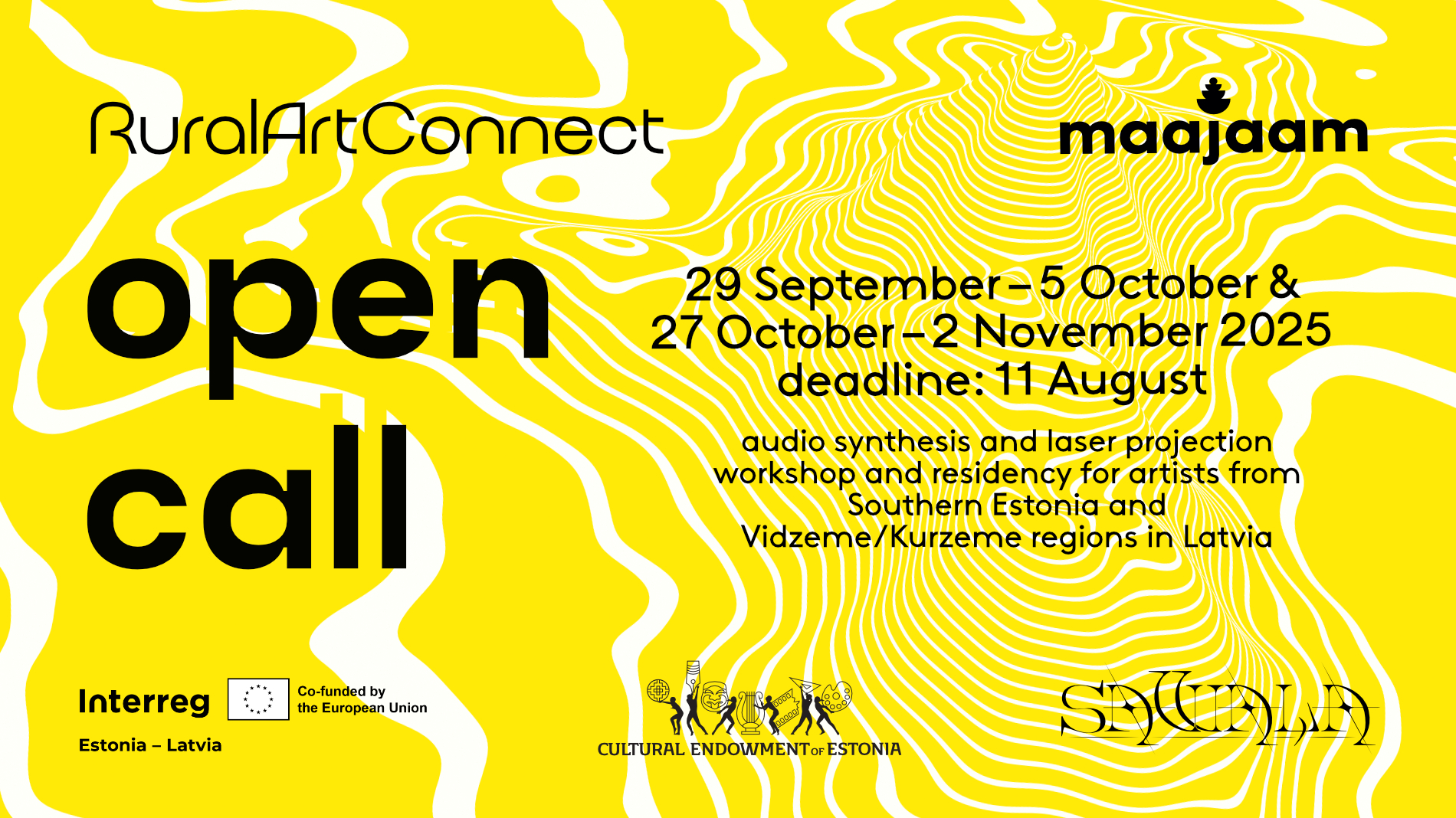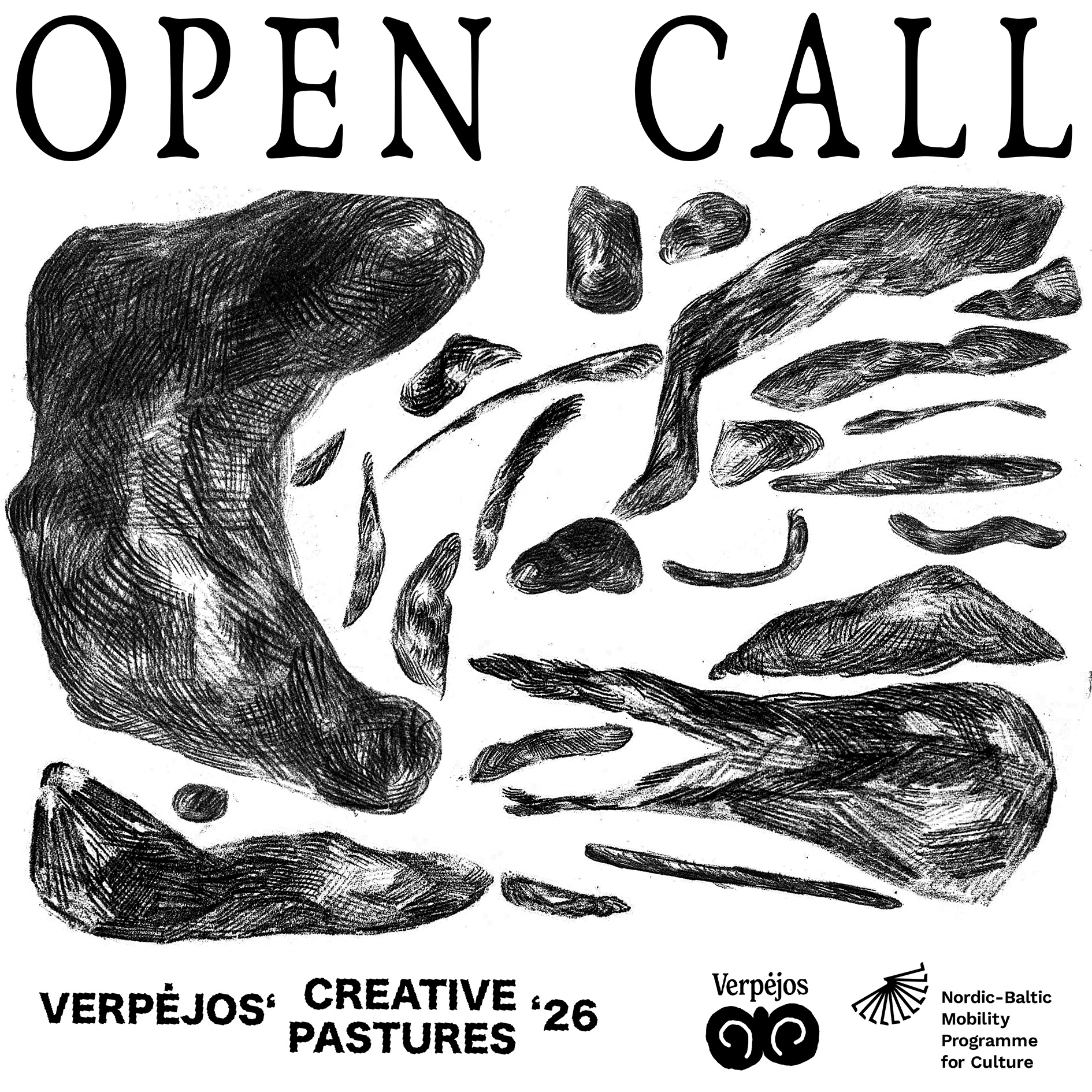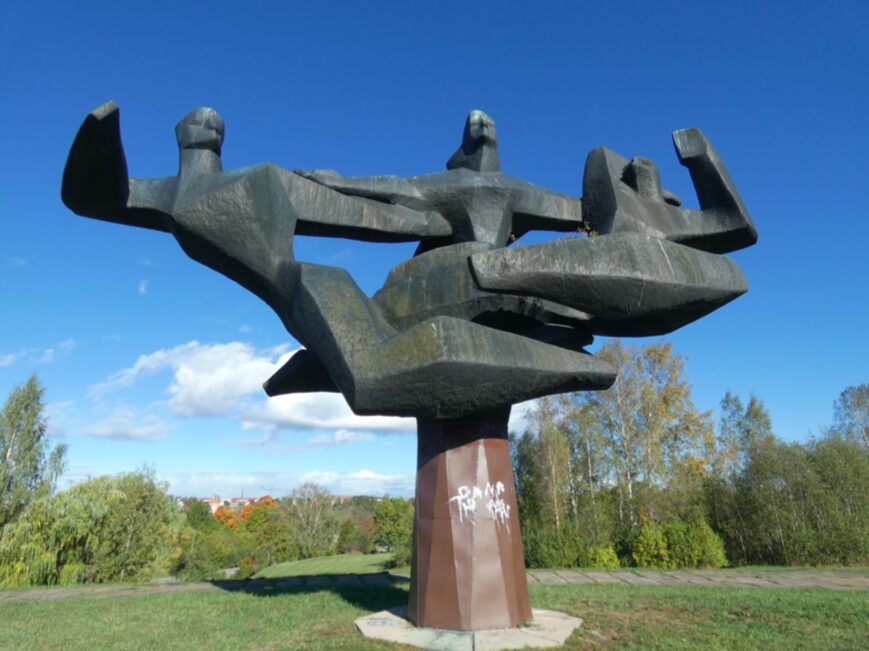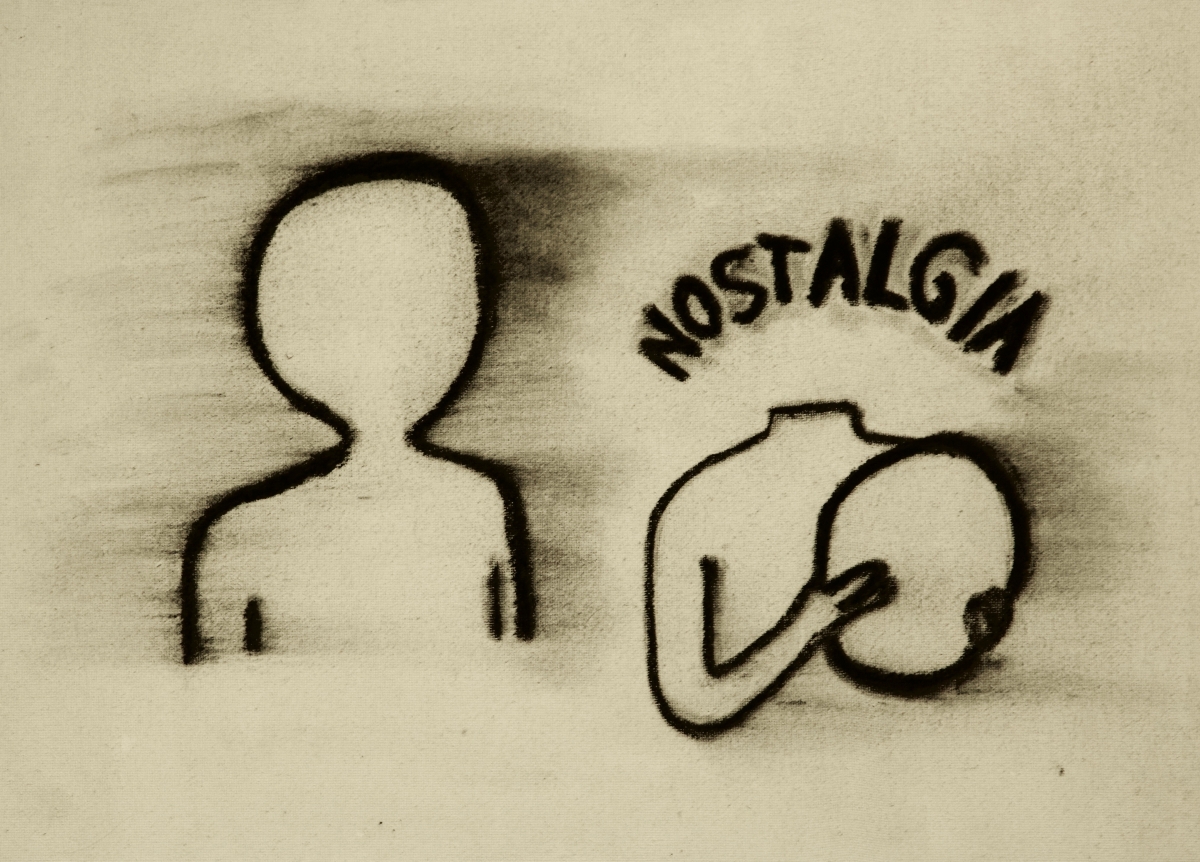
‘Third Way’ by Tanel Rander, installation detail, Tallinn City Gallery, 2016. Photo: Tallinn City Gallery
A guillotine is an apparatus designed for carrying out executions efficiently by beheading. The notorious killing machine of the French Revolution was used to behead tens of thousands of victims, ranging from common criminals to revolutionaries, aristocrats, and even kings and queens, including King Louis XVI and Marie-Antoinette. Since the very beginning, there has always been speculation whether this gruesomely effective killing machine really was as humane as promised, or whether victims’ brains still continued functioning after decapitation…
A freshly guillotined sculptured head of Jaan Anvelt, alias Eessaare Aadu, the former leader of the Communist Party of Estonia, the first prime minister of Soviet Estonia, and the chairman of the Council of the Commune of Working People of Estonia, stands proudly on a pedestal in Tanel Rander’s solo exhibition ‘Third Way’ at Tallinn City Gallery. But what is it: a trophy head, or communist nostalgia? When Jaan Anvelt mostly connotes his communist political activity, his alias under the pseudonym Eessaare Aadu comes up as a revolutionary thinker and writer. If decapitation as the complete separation of the head from the body results in death in humans and most other animals, it’s not capable of taking life from literature and ideas. Under a glass vitrine, open books written by Eessaare Aadu are carefully placed. Tallinn Art Hall’s press release announces that Tanel Rander’s exhibition discusses ‘the East European soul in the midst of constant transformation’. The show is accompanied by an additional publication called ‘The Power of Nostalgia’.[1] Long considered a disorder, nostalgia is now recognised as a powerful tool in the battle against anxiety and depression; so, maybe I’ve stepped into some sort of rehabilitation centre?
‘In the last decade, a fracture has appeared on the smooth surface of contemporary times, and from that fracture seeps the phantom pain of an eliminated past, nostalgia. It pours mostly on to barren ground, or is put to serve certain political interests. We can already see how once-forgotten artworks find their way into galleries, where, in their aesthetic regimes, the pieces die for a second time,’ says Rander about current times, and their relationship with the political past and its signs.[2]
When I meet the lawyer-turned-artist previously known as Chaneldior, he tells me about his childhood and teenage years in the 1990s, the feeling of decapitation, when heads were listening to Kurt Cobain, thinking Western thoughts, and abandoned bodies were left behind in the ‘East’.
When times change, heads fall, directly and/or metaphorically, but I think it was at least a voluntary decapitation that lots of other 1990s ‘kids’ went through. Although one might as well see these decapitated heads as trophies that ‘the West’ has taken, it took the heads as souvenirs, but didn’t want the bodies. These ‘East European’ heads and bodies are now separated by a sharp guillotine-like cut; humane or not, it maybe doesn’t even matter so much any longer. The question is, how to go on. There is no doubt that these heads need to be reattached to the bodies, and there are basically two options: to move the bodies to the guillotined heads, or the other way round. The second possibility means that a new way of co-existing has to be found, because there is no going back to what it once was.
There has to be a Third Way.

Tanel Rander. Photo: Tallinn City Gallery
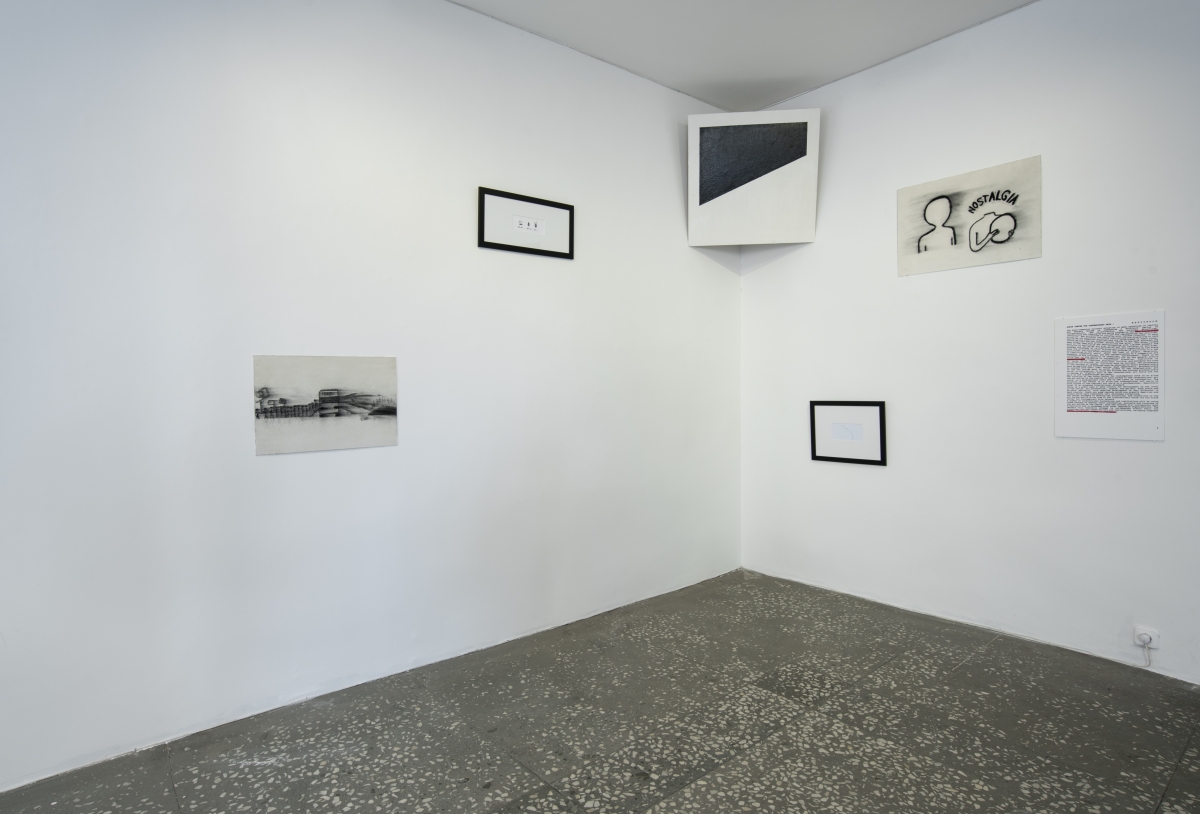
Exhibition view, ‘Third Way’ by Tanel Rander, Tallinn City Gallery, 2016. Photo: Karel Koplimets
Merle Luhaäär: You earned a law degree, and you have also been a practising attorney. What’s the main difference between being an advocate and an artist?
Tanel Rander: I can only speak on behalf of myself, although I have quite a precise diagnosis for both professions and their co-existence. Ideological opposition is the main foundation of my artistic position. And it could also be what drives my lawyer’s position, although I’m not an active lawyer any more, but I can’t exclude the possibility of becoming active again. To speak in general terms, the difference between these professions exists within a social imaginary that is constantly reproduced by artists, explicitly or in hidden mode: lawyers represent objectivity, while artists represent subjectivity. Lawyers buy, artists sell. These primitive archetypes have different masks that cover the precarious condition of cultural workers, and social injustice in general. The context of this masquerade is the art market, which could just remain a place where artists can sell their work. But instead, it penetrates and defines the meaning and content of art and artists.
You are linked to different media. If you had to define yourself, what would you say: are you a relational artist, a performance artist, a multimedia artist, or something else?
I wouldn’t follow that logic of definition. I’ve seen a document from the Soros Centre that imposed this way of defining in the early 1990s. That is not the reality, but a certain market ideology: forget definitions which are dysfunctional and alienating! I am a freelance cultural worker, and that’s all: I write, arrange exhibitions, curate and organise.
You are breaking the boundaries between art and literature, between art and culture theory. Why?
I’m not sure I break any boundaries, as I’m quite safely surrounded by the institution of contemporary art. Compared to the institution of literature, it is the most flexible and liberal context, where I can work as artist and writer. Many artists write, publish and teach. That is what intellectual culture is about: knowledge and subjectivity!
Your exhibition is called ‘Third Way’. Why not ‘The Power of Nostalgia’?
‘Third Way’ is not a descriptive title, but a suggestive title for this exhibition; while ‘The Power of Nostalgia’ is the name of a publication, a separate work, but also an explanatory text for the whole exhibition, pointing at an important aspect of East European subjectivity.

Exhibition view, ‘Third Way’ by Tanel Rander, Tallinn City Gallery, 2016. Photo: Karel Koplimets
What is your concept of Eastern Europe?
I see Eastern Europe as a discourse in contemporary art. So far, it has been based on the post-socialist space of Europe, with the loudest voices coming from Central and southeast Europe, and from Russia. A lot of materials that constitute this discourse have been produced with the support of the ERSTE Foundation in Vienna. So, in a cynical way, Eastern Europe is a region of economic interest for ERSTE Bank. The Baltic States are in a very marginal position in this discourse. We are also dominated by Scandinavian banks, although their input into our cultural life is not comparable to ERSTE: they tend more to decompose our societies. As a result, the Baltic States are cut off from the rest of Eastern Europe, and the links with Scandinavia are weak. We are close to Minsk, Moscow and St Petersburg, but due to the political situation these possible connections are frozen. That makes us one of the most isolated areas of Europe. But, to cut a long story short, I see Eastern Europe as a post-socialist space that is subject to Westernisation, Europeanisation and geopolitics from different directions. A large part of this space has a history of non-colonial Europe (slavery, anti-colonial struggles, etc), which has great potential for epistemic and aesthetic decolonisation.
I’ve also noticed that you use the term East instead of Eastern: is there a conceptual difference?
Actually, I use both, without making a difference, although a difference can be made between ‘the East’ as the opposite of the West, and ‘Eastern’ as a margin of the West. I think both concepts make sense, although ‘Eastern’ is the reality, and ‘the East’ is a hope rather than a presence, as the Romanian scholar Ovidiu Tichindeleanu once said.
Do you think that we have to get rid of both Eastern and Western thoughts to be ourselves?
I don’t believe that there are any Eastern thoughts. Eastern Europe is a relationship that exists within the West, and produces a difference, a set of mostly negative symptoms. These are, for sure, something to get rid of, but not by ignoring or eliminating: instead there should be a process of de-colonisation, de-production, de-articulation. And I think that this is my job as an artist, to constantly point to the negative issues, to produce material for discourse, without creating illusions of compromises and solutions. I could say that border thinking is the solution, the awareness that the East is the border, and our intellectual culture should acquire a decolonial, reflective dimension. But that is just a statement to make at the beginning. But the beginning started a long time ago: I have to do my job in the middle of the process of decolonisation. That is why the exhibition ‘Third Way’ points at a certain historical event that is the foundation of contemporary art in Eastern Europe: the symbolic revolution, financed by George Soros, that decapitated socialist art by using the dissident avant-garde as a guillotine blade.
Is nostalgia a step on the way home, towards the decolonisation of the mind?
Nostalgia is a phantom pain that comes after decapitation. Our head, or subjectivity, is situated in the West, while our body is in the East. The urge to unite the body with the head has two solutions: we either move to the West to be ‘ourselves’, or we stay at home and build ‘our own’ identity. The latter is happening in Eastern Europe and Russia: the outbreak of nationalism and patriotism that often use quasi-decolonial arguments. Nostalgia is an empowering element in this process, as it is the passage that lets governmentality enter the intimate spheres of human subjectivity. But it could also work in the opposite direction: nostalgia can be selective, something like a collective dream.
What about the potato? I’ve seen it a lot in your art. Is it a symbol of the Estonian mindset before and after colonialism?
I’ve used potatoes in several works, where they have been part of the stories I tell, all related to Estonia. Only once has it been a symbol, in the video ‘Identity’ that I shot near Vienna. So, yes, it links with the national consciousness, but apart from that, it is an embodiment of the history of Europe and global ‘coloniality’.
I believe the Dalai Lama has said that we can never obtain peace in the outer world until we make peace with ourselves. Do you think it’s peace that a beheaded Eastern Europe is longing for?
I really hope that Eastern Europe wants peace and not war. Although war is an essential element of Eastern Europe. My grandparents and older relatives experienced several wars that happened here. War is perceived here as a natural disaster, something like an earthquake, and that makes me really concerned. I don’t even want to use hegemonic terms, like ‘geopolitics’: continents and landscapes don’t fight. There are people who have names and addresses, people who wear underwear and have dreams at night. So the Dalai Lama is right: we have to forget about ‘the world’, and start talking about bodies and subjectivities.
Is it possible to be something without being a part of anything?
Human instruments, like thoughts and the guillotine, make it possible.
Do you think that there are two ways commonly known in the whole world, two general models to follow, and that everyone is basically forced to make a decision to go ‘East’ or ‘West’?
The two commonly known ways are the Global-North and the Global-South. But these are not options, but rather results. Symptomatically, the whole world has to think like the Global-North, due to the same guillotine-effect that defines Eastern Europe. I don’t believe that the emergence of the BRICS countries, Eurasianism, and the idea of a polycentric world would give you any options: it is the agenda of the global elite, no matter where they are situated. ‘Force’ is the proper word to use in this context. Subjectivity and force: that is what interests me most.
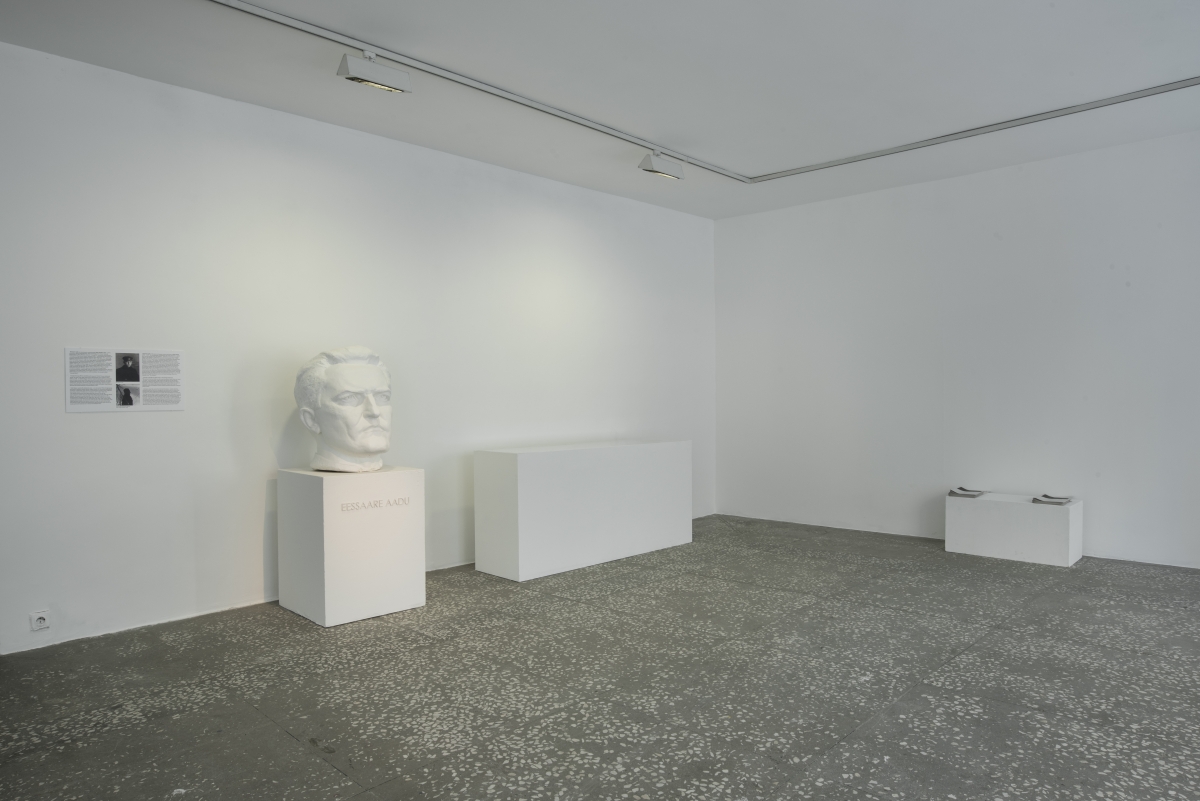
Exhibition view, ‘Third Way’ by Tanel Rander, Tallinn City Gallery, 2016. Photo: Karel Koplimets
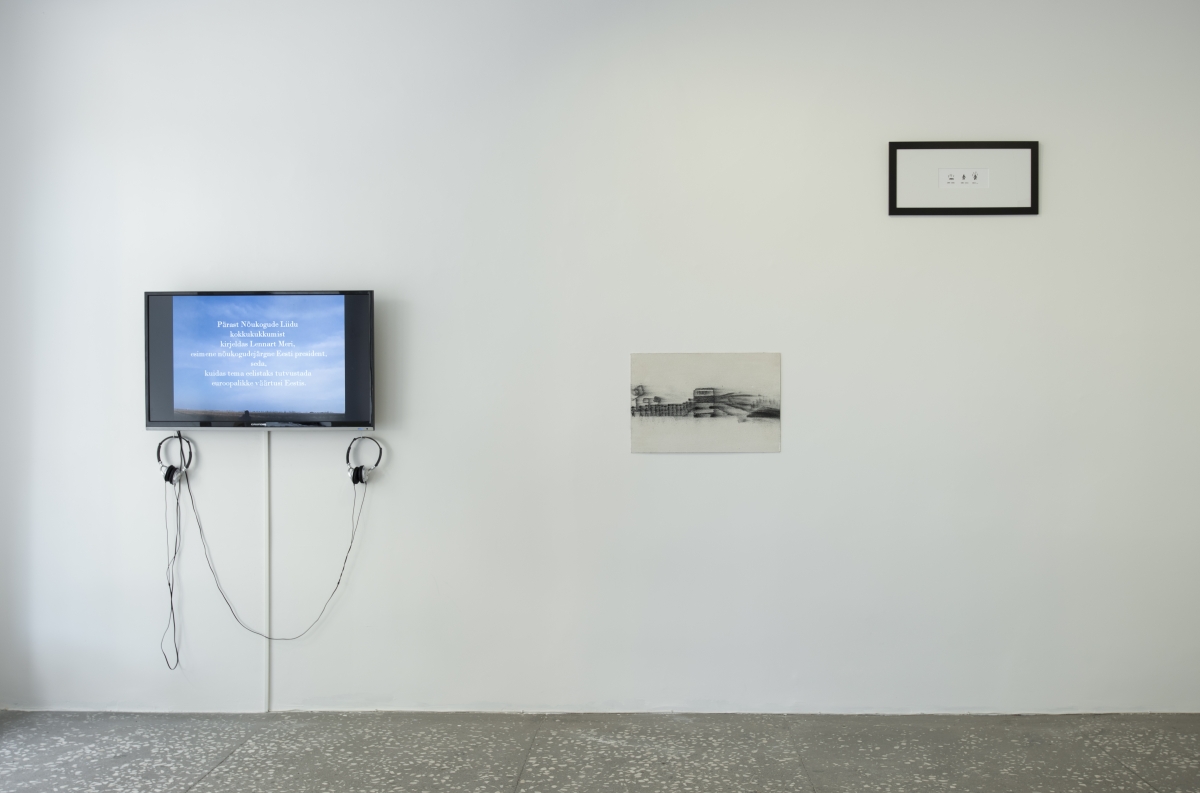
Exhibition view, ‘Third Way’ by Tanel Rander, Tallinn City Gallery, 2016. Photo: Karel Koplimets
___________
Tanel Rander (b. 1980) graduated from the Faculty of Law at the University of Tartu (2005), has an MA degree in interdisciplinary arts from the Estonian Academy of Arts (2010), and is currently pursuing a PhD at the same academy, researching Eastern Europe from a de-colonial perspective. His work is centred on composition, and linked to different media. The solo exhibition entitled ‘Third Way’ will be on at Tallinn City Gallery until 11 September. On 2 September, a presentation of the newly published book will take place ‘Archives and Disobedience. Changing Tactics of Visual Culture in Eastern Europe’, a collection of works by 12 authors, compiled by Margaret Tali and Tanel Rander (Eesti Kunstiakadeemia Kirjastus, 2016).
[1] The publication ‘The Power of Nostalgia’ accompanies the exhibition ‘Third Way’ by Tanel Rander in Tallinn City Gallery from 12 August to 11 September 2016. Texts by Tanel Rander and Aarne Ruben. Translation by Tanel Rander and Priit Silm. Front cover by Tanel Rander. Must ruut, 2016
[2] Tallinn Art Hall’s Press release of 11 August 2016: Tanel Rander, ‘Third Way’ on show at Tallinn City Gallery from 12 August to 11 September.




